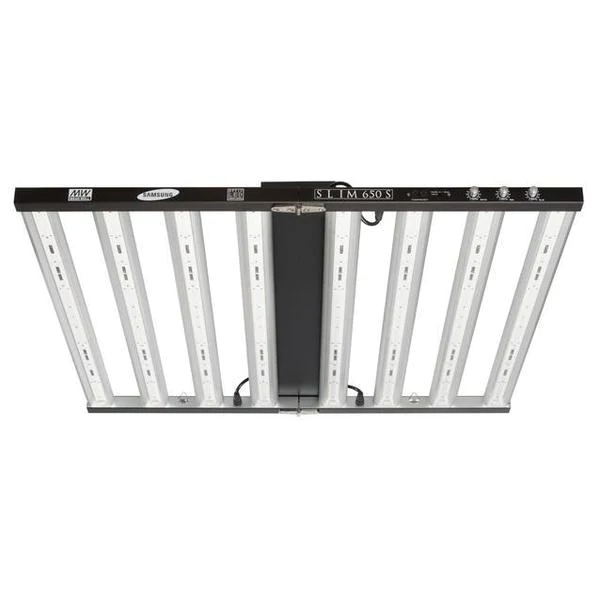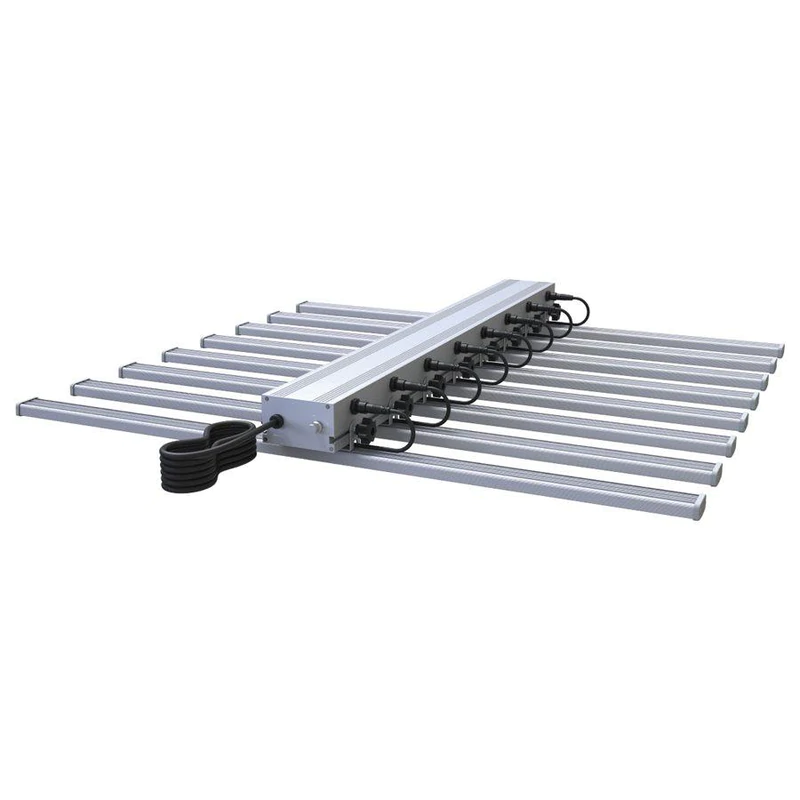- Home
- SHOP ECO FARM
-
TOP BRANDS
-
Grow Lights Brands
- Adjust-A-Wing
- Apollo Horticulture
- Bestva
- Black Dog LED
- California Lightworks
- ChilLED Grow Light
- Eco Farm
- HLG - Horticulture Lighting Group
- Kingled
- Kind LED
- Mars Hydro
- Morsen
- Neilo
- NextLight
- Phlizon
- PlatinumLed
- Roleadro
- Optic LED Grow Lights
- ViparSpectra
- Vivosun
- EYE Hortilux
- IPOWER
- NanoLux
- Phantom grow light
- Gavita grow lights
- Grower's Choice
- Lumatek
- Maxibright
- Yearld Pro
- ThinkGrow
- Crecer Lighting
- Green Sunshine Electric Sky
- fohse aries
- loriflux
- luxx
- fluence
- iluminar
- Lex
- LTC
- Rayonled
- FGI
- PHOTONTEK
- Grow Tents & Kits Brands
- Extraction & Harvest Brands
- Climate Control & Hydroponic Brands
-
Grow Lights Brands
- COMPANY INFO
- COOPERATE WITH US
- Blog
- Sign in
- Home
-
SHOP ECO FARM
- ECO Farm Grow Lights
- ECO Farm LED Grow Lights
- ECO Farm Quantum Board
- ECO Farm Samsung LED Grow Lights
- ECO Farm COB Grow Lights
- ECO Farm Commercial Lights
- ECO Farm Supplemental Grow Light
- ECO Farm Fluorescent grow lights
- ECO Farm HPS & MH Grow Lights
- ECO Farm CMH Grow Lights
- ECO Farm HID/CMH Bulbs & Ballasts
- ECO Farm Grow Tents & Kits
- ECO Farm 2x2ft Grow Kits
- ECO Farm 3x3ft Grow Kits
- ECO Farm 3.3x3.3ft Grow Kits
- ECO Farm 4x4ft Grow Kits
- ECO Farm 5x5ft Grow Kits
- ECO Farm Grow Tent - Standard Style
- ECO Farm Grow Tent - Extension & Roof & Lodge Style
- ECO Farm Extraction & Harvest
- ECO Farm Rosin Press Machine
- ECO Farm Dry & Wet Trimmers
- ECO Farm Oil Accessories
- ECO Farm Medicinal Plants Grinder
- ECO Farm Medicinal Plants Containers
- ECO Farm Medicinal Plants Dryer
- ECO Farm Refrigeration Dryer
- ECO Farm Climate Control & Other Accessories
- ECO Farm Inline Duct Fans
- ECO Farm Oscillating Fans
- ECO Farm Exhaust Fans
- ECO Farm Air Filter
- ECO Farm Duct Muffler
- ECO Farm Ventilation Kits
- ECO Farm Plant Humidifiers
- ECO Farm Plant Dehumidifiers
- ECO Farm Hydroponic Accessories
- ECO Farm Other Accessories
- ECO Farm Hydroponics Microscopes
-
TOP BRANDS
- Grow Lights Brands
- Adjust-A-Wing
- Apollo Horticulture
- Bestva
- Black Dog LED
- California Lightworks
- ChilLED Grow Light
- Eco Farm
- HLG - Horticulture Lighting Group
- Kingled
- Kind LED
- Mars Hydro
- Morsen
- Neilo
- NextLight
- Phlizon
- PlatinumLed
- Roleadro
- Optic LED Grow Lights
- ViparSpectra
- Vivosun
- EYE Hortilux
- IPOWER
- NanoLux
- Phantom grow light
- Gavita grow lights
- Grower's Choice
- Lumatek
- Maxibright
- Yearld Pro
- ThinkGrow
- Crecer Lighting
- Green Sunshine Electric Sky
- fohse aries
- loriflux
- luxx
- fluence
- iluminar
- Lex
- LTC
- Rayonled
- FGI
- PHOTONTEK
- Grow Tents & Kits Brands
- Apollo Horticulture
- Black Box
- CoolGrows
- Eco Farm
- GrowLab
- Gorilla Grow Tents
- Mars Hydro
- Quictent
- Secret Jardin
- Unit Farm
- TopoGrow
- VIVOSUN
- Topolite
-
COMPANY INFO
-
COOPERATE WITH US
- Blog
Optic LED Slim 650S Dimmable LED Grow Light VS Lightspeed Pro Cosmic Plus LED 600W LED Grow Light
April 12, 2022
There was a time when choosing a grow light was simple — all you needed to know was what brand and wattage you wanted. Things have changed. Drastically. The market has been flooded with grow light options and it can be quite challenging to figure out which light is best for you. Below is some advice on how to know what the best LED grow light looks like.
What makes LED Grow Lights different from standard LED lights?
LED Grow Lights are different from the usual LED bulbs in your household. The everyday light only illuminates, while grow lights have a broad spectrum of red and blue that stimulate growth.
LED grow lights come in many shapes and sizes. But as the most needed units of LED grow lights, LED chips have most of the effect on the quality of the lighting, such as spectrum (colors) and photon flux (“brightness”) produced.
Since LED grow light manufacturers can choose the LEDs they use in their lamps, it is crucial to understand which kind of LED grow light best fits the specific application.
One of the advantages of LED grow lights compared to traditional lighting solutions is the ability to match the lighting to the needs of plants.
Can you have too much light in a grow room?
Short answer, no. However, you are spending money to convert electricity into usable light. If you are creating more light than your plants need (or if the light isn’t getting to your plants), then you are very literally, wasting money.
Reflective walls that surround your plants or lights with reflectors built-in can double your PAR efficiency and ensure optimal light absorption. The truth is that horticulturists and botanists don’t know a great deal about the
Without installing more lighting.
Optic LED Slim 650S Dimmable LED Grow Light

Features:
Optic LED’s Slim650S is designed and built to be one of the highest performing LED grow lights on the market. It uses Samsung’s new LH351H version 2 660nm deep red LED chip, 3.75 umols/j and LH351H 450nm royal blue LED with Samsung white LM301H LED, over 3.0 umols/j! Pair it with a 3-way dimmable system running 3,096 LEDs and you get breakthrough efficiency and tuning capabilities. When combined with our touchscreen master controller, the Slim 650S allows growers to recreate nature with precise control. The Slim 650S can be called the most advanced LED grow light ever.
Lightspeed Pro Cosmic Plus LED 600W LED Grow Light

Features:
The Lightspeed Pro Cosmic Plus LED 600W Grow Light provides 600W of powerful lighting, producing higher intensity lighting to ensure maximum indoor plant growth. This 600W full spectrum hydroponic grow light is specially designed to optimize plant reproduction during the growth and flowering stages of plants cultivation. Like all of our Lightspeed Cosmic lighting ranges, this grow light has many innovative features designed to help you reduce operating costs and make your hydroponics business more profitable. First, it provides more uniform full-spectrum LED natural light than HPS and MH lighting. Plus, it has a dimmer that allows you to precisely control the light during key growing stages to help prevent damage to sensitive plants and extend the life of your grow lights.
Buying An LED Grow Light: What To Consider
There is no need to make buying a grow light a complicated process. By considering a few factors you can get the perfect light for your needs.
Let me show you how:
Think about the space you have available and where and how the light will fit.
Also think about how much you intend to grow and the wattage of the grow light you need to purchase (you can use the grow space chart listed above to work out roughly how many watts you need).
Then you need to consider the light spectrum.
Think about it this way:
If you want to grow your plant right through from seedling to flower you will need a full spectrum light.
But if your plant has already germinated you might just need the blue or red spectrum — to help with growing and flowering respectively.
You might also want to check the PAR output.
This is where things can get a little confusing.
PAR is one of the biggest factors on the yield you might get from your grow light. It stands for Photosynthetic Active Radiation.
In simple terms:
It is the amount of light produced that is usable to plants, ie light wavelengths that can be used for photosynthesis (ie within the range of 400–700nm). Try and look for a light with high PAR readings.
And remember:
You are likely going to have your grow light on for a long period of time so you might want to consider how much energy it uses.
LED lights use less energy than traditional lights but it is always worth checking the energy consumption of the light you intend to buy.
Soon you will have your plants growing like never before!
Conclusion
If you plan on using your light for a while, LEDs are a better deal than HID. High-end LEDs are more efficient than HID and have far more ability to provide a specific, tailored spectrum. Lower energy consumption is not only good for you, but it’s good for the environment. Don’t forget, too, the cost and hassle associated with changing bulbs for HID fixtures every year to six months. A great LED grow light will last you many years, maintenance free. If that wasn’t enough, you also don’t have to feel guilty about using a light that contains mercury and other toxic heavy metals like those contained in HID and fluorescent.
Also in Indoor Grow LED Grow Light
HLG Greenhouse Pro HE HV 630W LED Grow Light VS Geeklight grow light 480W hydroponic led grow light
October 20, 2023
